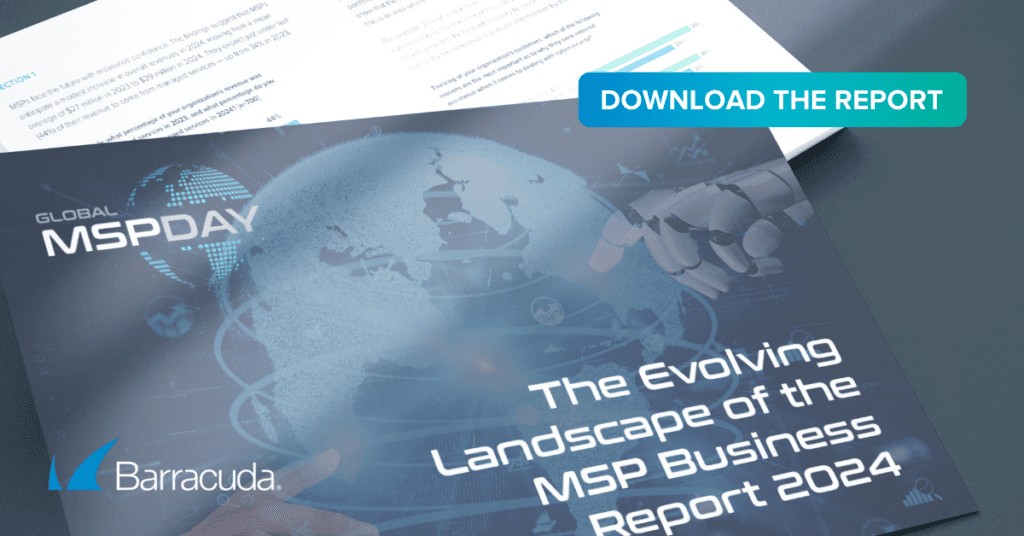 As we approach the second half of 2024, managed service providers (MSPs) are at a critical juncture. The ever-changing landscape of technology, cyber threats, and market demands presents both challenges and opportunities. In our recent “The Evolving Landscape of the MSP Business Report 2024,” we explored the current state of the MSP market.
As we approach the second half of 2024, managed service providers (MSPs) are at a critical juncture. The ever-changing landscape of technology, cyber threats, and market demands presents both challenges and opportunities. In our recent “The Evolving Landscape of the MSP Business Report 2024,” we explored the current state of the MSP market.
We began the year with predictions on critical developments and channel trends. This midyear outlook aims to provide MSPs with actionable insights to navigate the second half of 2024 effectively.
Reflecting on early 2024 MSP predictions
At the beginning of this year, we predicted seven key trends that would shape the MSP landscape:
- Hyperscalers will significantly expand routes to the market.
- Embracing hybrid business models will be the key to success.
- Partners growing their cybersecurity practices will seek offerings that provide a lower barrier to entry.
- AI technology, threat intelligence, and cyber hygiene will become essential service delivery components.
- MSPs will play a critical role in enabling businesses to adopt generative AI and automation technologies securely.
- Threat feeds will emerge to help MSPs combat bad actors.
- SMEs will rely on multiple MSPs to meet their technology needs.
Did we get it right?
Hyperscalers: Expanding influence
Once a confusing and mysterious trend, hyperscalers like AWS, Microsoft Azure, and Google Cloud are gaining momentum in the MSP market. According to The Evolving Landscape of the MSP Business 2024 report published by Barracuda in June, 47% of the MSPs surveyed are turning to cloud marketplaces to buy products and services for their customers.
Why are MSPs jumping on the cloud marketplace bandwagon? It allows MSPs to deliver a broader range of services more efficiently, which supports our previous prediction that notable increases in volume and sales through hyperscalers will enable MSPs to expand their routes to the market and increase cybersecurity offerings.
These findings also bolster our position on a lower barrier to entry as channel partners look for SMB-focused security vendors via cloud marketplaces to add to their product portfolio.
AI integration: From prediction to reality
At the beginning of the year, we predicted that AI would play an increasingly pivotal role in MSP operations. This prediction has indeed come to fruition. AI, with its ability for enhanced threat detection, automated response, predictive maintenance, and numerous other benefits, is no longer an option; it’s a necessity, with 58% of the MSPs surveyed as part of The Evolving Landscape of the MSP Business Report 2024 currently using AI services and 37% planning to onboard AI services within the next 12 months.
However, with the rise of AI comes a new set of challenges. The complexity of integrating AI into existing systems and the need for specialized skills to manage these tools have become apparent. MSPs must continue to invest in AI training for their staff and look for user-friendly AI solutions to overcome these hurdles.
Cyber hygiene: An ongoing priority
We predicted that cyber hygiene, along with AI technology and threat intelligence, would become essential, if not mandatory, components of an MSP’s advanced service stack. Maintaining robust cyber hygiene has become even more critical as cyberattacks become more sophisticated.
However, we were surprised to learn that 98% of the MSPs we surveyed in The Evolving Landscape of the MSP Business Report 2024 believe their organization needs to improve its own security hygiene — almost half (46%) say significant improvements are required.
MSPs are responsible for maintaining a high degree of cyber hygiene with regular software updates, multifactor authentication, and comprehensive employee training programs. The rapid pace of new threats means MSPs must continuously adapt and educate their clients while securing their own environments and maintaining high-security standards.
MSP growth: A bright horizon
In The Evolving Landscape of the MSP Business Report 2024, we saw MSP growth continue with a modest increase in revenues this year, moving from an average of $27 million in 2023 to $29 million in 2024. They expect just under half (44%) of their revenue to come from managed services, up from 34% in 2023.
This growth is primarily due to MSPs transitioning from a project-based model to a recurring revenue one. In addition, businesses are downsizing their internal IT staff in response to growing economic pressures and a need for more skilled IT talent.
This finding coincides with our earlier prediction that SMEs will rely on multiple MSPs to meet their technology needs. 92% of the MSPs we surveyed believe businesses are downsizing their internal IT staff and relying more heavily on outsourced IT and cybersecurity services as properly procuring, implementing, managing, and scaling these vital resources becomes more expensive and complex.
Final thoughts
The MSP industry is undoubtedly at a dynamic juncture. With AI, hyperscalers, the increased need for robust cyber hygiene, and economic pressures shaping their trajectory, the journey ahead for MSPs is filled with opportunities to innovate, collaborate, and deliver exceptional value to their clients. Those who embrace these dynamics will not only navigate the market’s challenges but also position themselves as leaders in the next digital transformation wave.
Note: This article was originally published in Managed Services Journal.
Photo: Black Salmon / Shutterstock

